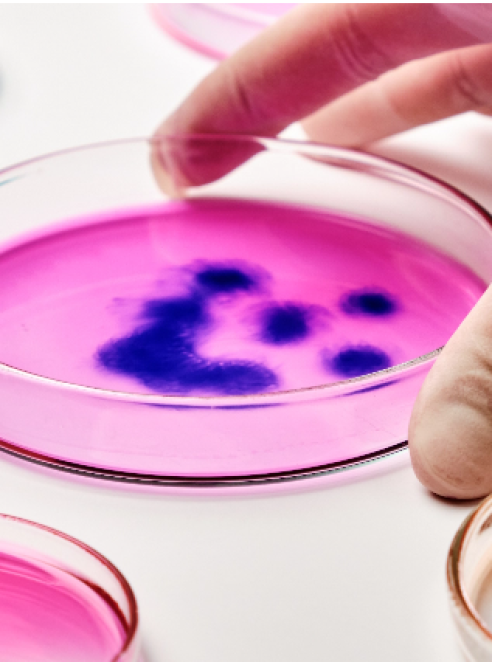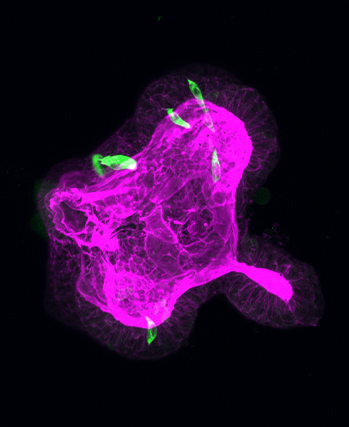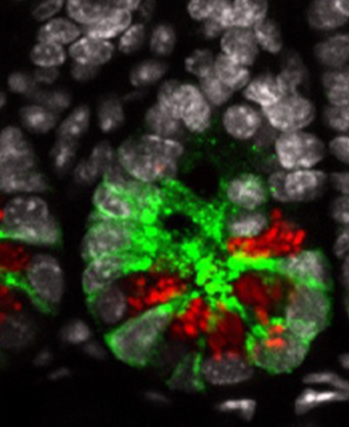Mitochondria are the metabolic hub of the cell, playing a central role in regulating immune responses. Dysfunction of mitochondrial reprogramming can occur during bacterial and viral infections, compromising hosts’ immune signaling. Comparative evaluation of these alterations in response to bacterial and viral ligands can provide insights into a cell’s ability to mount pathogen-specific responses. In this study, we used two-photon excitation fluorescence (TPEF) imaging to quantify reduced nicotinamide adenine dinucleotide phosphate (NAD(P)H) and flavin adenine dinucleotide (FAD) levels in the cell and to calculate the optical redox ratio (ORR), an indicator of mitochondrial dysfunction. Analyses were performed on RAW264.7 cells and murine bone marrow derived macrophages (BMM) stimulated with bacterial (LPS) and viral (Poly(I:C)) ligands. Responses were cell-type dependent, with primary cells having significantly higher levels of FAD and higher oxygen consumption rates, suggesting BMM may be more dependent on mitochondrial metabolism. Our findings also suggest that FAD-TPEF intensity may be a better predictor of mitochondrial activity and localization since it demonstrates unique mitochondrial clustering patterns in LPS vs. Poly(I:C) stimulated macrophages. Collectively, we demonstrate that TPEF imaging is a powerful label-free approach for quantifying changes in mitochondrial function and organization in macrophages following bacterial and viral stimuli.
Label-free imaging for tracking mitochondrial activity
Research Area: Cell Biology, Biophotonics and Image Analysis
https://www.nature.com/articles/s41598-021-93043-9
Authors: Christian Harry Allen, Duale Ahmed, Olivia Raiche-Tanner, Vinita Chauhan, Leila Mostaço-Guidolin, Edana Cassol & Sangeeta Murugkar

Related Articles

Publication
BMP signaling in the intestinal epithelium drives a critical feedback loop to restrain IL-13-driven tuft cell hyperplasia
Although Helminth infections are prevalent throughout the world, they are particular a health...

Publication
LSD1 represses a neonatal/reparative gene program in adult intestinal epithelium
After birth, the epithelium that lines our gut transitions (or matures) so that it can deal...
Publication
Targeting mRNA binding proteins to respond to stress responses
The paper establishes the phosphorylation of heterogeneous nuclear ribonucleoprotein A1...